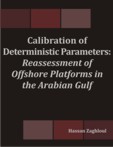Add abstract
Want to add your dissertation abstract to this database? It only takes a minute!
Search abstract
Search for abstracts by subject, author or institution
Want to add your dissertation abstract to this database? It only takes a minute!
Search for abstracts by subject, author or institution
by Tao Lu
| Institution: | Aalto University |
|---|---|
| Year: | 2016 |
| Posted: | 02/05/2017 |
| Record ID: | 2123570 |
| Full text PDF: | https://aaltodoc.aalto.fi/handle/123456789/22532 |
The building sector consumes the most energy and emits the greatest quantity of greenhouse gases of any sector. Energy savings in this sector can make a major contribution to tackling the threat of climate change. Research has produced a variety of solutions, for example, net zero and positive-energy buildings. At the same time, both models and controls are being challenged by increasingly complex buildings equipped with advanced information and communications technologies (ICT). This dissertation addresses these challenges by proposing a multidisciplinary, wide-ranging modeling methodology that enables new strategies for saving building energy. The core methodology utilizes novel modeling approaches to improve predictive models and produce innovative energy solutions. Models are validated and investigated using a variety of buildings and controls. Data centers and demand controlled ventilation (DCV) are the focus because they represent both 'multifunctional buildings' and general energy system controls. This dissertation makes the following seven original contributions: (1) The first systematic, complete case study of a data center in which infrastructure, energy and air management performance, and waste heat recovery systems were investigated, analyzed, and quantified using long-term power consumption data. (2) A novel and tuning-free DCV building control strategy that is far superior to proportional control and more competitive than proportional-integral-derivative (PID) control. (3) An artificial neural network (ANN) model for predicting the water evaporation rate in a swimming hall. (4) A new ANN model for estimating prediction intervals and accounts for the uncertainty of point estimation for indoor conditions in an office building. (5) A new Maximum Likelihood Estimation (MLE) model for predicting constant and time-varying air change rates and a coupled model for estimating the number of occupants in an office. (6) Discovery of a new physical law for run-around heat recovery systems that can be used to develop a simulation model to estimate the system performance for constant volume air (CAV) and DCV systems. This new law was verified in different sites. (7) A new hybrid numerical-ANN model for building performance simulation. The hybrid model can improve not only the model accuracy but also the generalizability of ANN. The results demonstrate the applicability of the modeling techniques and the models, and significant energy savings in buildings. The resulting improvements in model accuracy, forecasting capability, and energy efficiency were published in eight journals. By unifying the results of eight publications, this dissertation presents a comprehensive and coherent study that advances the state-of-the-art building energy research. Advisors/Committee Members: Lü, Xiaoshu, Prof., Aalto University, Department of Civil Engineering, Finland (advisor).
Want to add your dissertation abstract to this database? It only takes a minute!
Search for abstracts by subject, author or institution


|
Predicting the Admission Decision of a Participant...
|

|
Development of New Models Using Machine Learning M...
|

|
The Adaptation Process of a Resettled Community to...
A Study of the Nubian Experience in Egypt
|

|
Development of an Artificial Intelligence System f...
|

|
Theoretical and Experimental Analysis of Dissipati...
|

|
Optical Fiber Sensors for Residential Environments
|

|
Calibration of Deterministic Parameters
Reassessment of Offshore Platforms in the Arabian ...
|

|
How Passion Relates to Performance
A Study of Consultant Civil Engineers
|